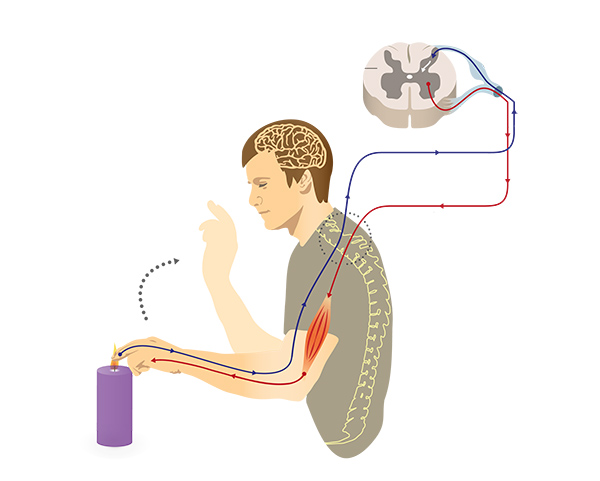What is the Somatic nervous system?
https://www.uq.edu.au/
Somatic nervous system
The somatic nervous system (SNS) is also known as the voluntary nervous system.
It contains both afferent nerves (which send information to the brain and spinal cord), made of sensory neurons that inform the central nervous system about our five senses; and efferent nerves (which send information from the brain), which contain motor neurons responsible for voluntary movements, such as walking or lifting an object.
The nerves in the somatic nervous system are classified based on their location, either in the head regions or in the spine region. There are 12 pairs of cranial nerves, which send information to the brain stem (base of the brain where the spinal cord connects) or from the brain stem to the periphery.
These nerves are required for the five senses and for the movement of head, neck and tongue. The spinal nerves are 31 pairs of nerves that send sensory information from the periphery to the spinal cord and muscle commands from the spinal cord to the skeletal muscles.
It’s interesting to note that while the neurotransmitter acetylcholine has an excitatory effect in the somatic nervous system (ramps up a response), in the autonomic nervous system (the involuntary nervous system), it has an opposite inhibitory function (dampens a response).
Several diseases affecting motor neurons, for example motor neurone disease (MND), result in death of the neurons (neurodegeneration) and eventually muscle wasting and loss of functions. Work at QBI is being conducted to understand the genetics and the molecular mechanisms responsible for MND.
Reflexes: involuntary movements

Image credit: MartaAguayo / Wikimedia commons
In addition to regulating the voluntary movements of the body, the somatic nervous system is also responsible for a specific type of involuntary muscle responses known as reflexes, controlled by a neural pathway known as the reflex arc.
A reflex arc includes a sensory neuron that sends a signal straight to the spinal cord (bypassing the brain) which in turn generates a response such as a quick muscle contraction so fast that it’s subconscious. One common example is the knee reflex: hitting the patellar tendon just below the knee cap with a reflex hammer leads to an automatic contraction of the quadriceps – which results in the lower leg kicking out.
Author: Alessandra Donato from the Hilliard Lab

You have shared a lot of information in this article about Somatic Therapy Training Program. I would like to express my gratitude to everyone who contributed to this useful article. Keep posting.
ReplyDeleteThanks for posting this article on somatic nervous system. The neurologist in Chennai treats the diseases of the brain and spinal cord, peripheral nerves, and muscles. They are specialized training in diagnosing and treating disorders of the brain and nervous system.
ReplyDelete